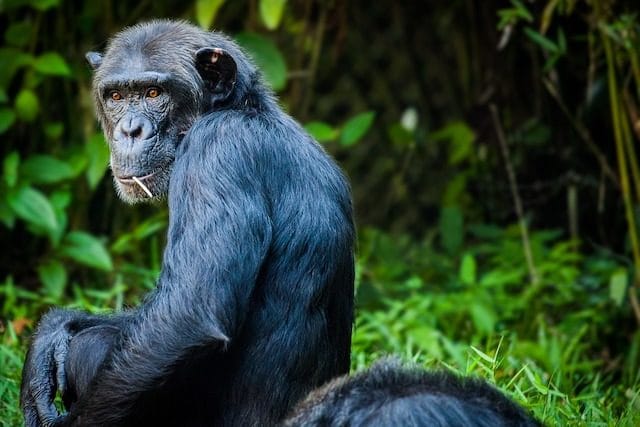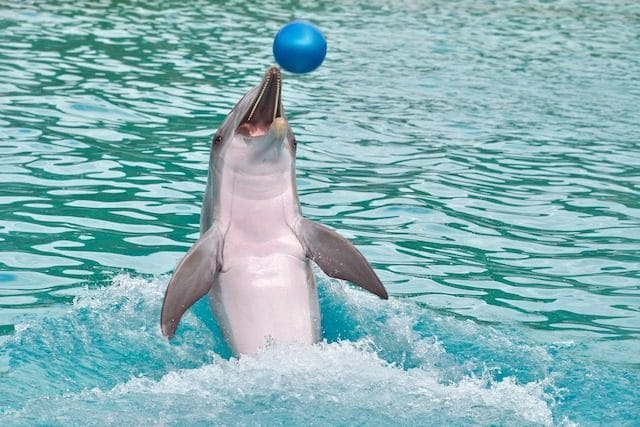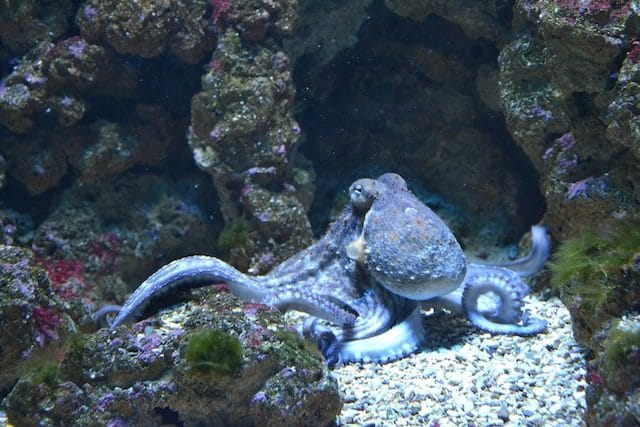Measuring intelligence is no easy task. Humans have IQ tests but, by and large, these are dismissed as being either partially or wholly unable to gauge how smart someone is. Your IQ just doesn’t mean much about intelligence and tests are typically very biased.
Now, given the issues with a human intelligence test, one that relies on a mutually understood language and rules between tester and tested, imagine how hard it must be to measure the intelligence of a non-human. Most of us know, in an anecdotal sort of way, that some animals are considered smarter than others.
People post videos online constantly about their pets doing something remarkable like opening doors or fetching unusual items. Does that indicate intelligence? If so, how much intelligence? Likewise, it’s fairly common knowledge that animals like dolphins and chimpanzees are regarded as smart compared to most other members of the animal kingdom but there is so much history behind the science of tests and research that went into these conclusions the average person takes it at face value.
What Makes a Smart Animal?

There are numerous kinds of intelligence. Basic book smarts, you might call it, is but one. Logic and reasoning, emotional intelligence, and even musical intelligence are different kinds that have different applications and are formed in different ways. And that’s just among humans. For animals, you need to look beyond human-centric definitions and understandings.
For some, that means things like the ability to learn and how an organism applies what it has learned. So when you teach a dog a trick, that’s a kind of intelligence at play. But animals clearly learn things on their own as well. They can also learn as a group, something that does not apply to humans in the same way at all. By this we mean collective intelligence, the sort of things you see in a hive of bees.
Some researchers liken animals to humans so we can at least relate to what intelligence in an animal means. Maybe your dog is as smart as a toddler. A chimp might be as smart as a four-year-old. Crows could be as smart as 7-year-olds.
A lot of these studies are limited and also biased. The dog study, for instance, was based on how many words a dog can learn and feedback from dog obedience judges. So it would be like a baker teaching you to bake, making you bake a cake, and then saying how smart you are based on that cake. There’s a lot missing in the equation.
More advanced research into animal cognition involves actually studying the brains of animals. Dogs have been given MRIs so we can see how their brains function.
The simplest way to understand the intelligence of animals is through observation. Behavior in animals can be viewed as insignificant or a fluke but pattern and repetition are things you notice over time. Any pet owner knows, with certainty, just how smart their pet is. They can solve problems, they have emotions, maybe even a sense of humor. But if that’s not scientific enough for you, we can do better.
Chimpanzees

Chimpanzees are often seen as the hallmark of animal intelligence. Our closest relatives, they are the top tier. And that’s not an undeserved title. In many ways, though not all as we’ll get into later, chimps are incredibly smart.
There is still some debate over the veracity or complexity of a chimp’s understanding of human language, but some have demonstrated an ability to communicate with sign language in the past. Also like humans, chimps work in groups, demonstrate self-awareness, kindness, empathy, and a host of other seemingly human-like characteristics.
In terms of tool use, this isn’t just apes using rocks to break open nuts, either. Chimps in Gabon use whole toolkits consisting of five different sticks, each with a different size and function, to break into beehives and extract honey. They make these tools ahead of time and then travel to the hives. Chimp communities use as many as 25 different tools, and the older apes teach the younger ones how to make them.
Research from Japan in 2013 shocked people online when an accompanying video showed a chimpanzee doing a memory test that involved remembering and repeating numbers one through nine after they appear in a random pattern on a screen for a fraction of a second (210 milliseconds, actually). The chimp is able to do this with an incredible accuracy that actually supersedes that of adult humans trying the same task. Even humans who have extensive training ahead of time cannot beat the chimpanzee.
The memory test was only one chimp, however, and the results are not typical of all chimps. Nonetheless, the fact that an ape is able to soundly defeat humans at such a task is remarkable.
Some researchers have proposed that the idea of what separates humans from other animals, in terms of intelligence, needs some retooling. Most of the things that made us unique, in our own minds, no longer apply and have been seen in chimps. Language, specifically symbolic language, seems to be our greatest sole achievement.
Dolphins

Dolphins are notoriously quick learners and also demonstrate a range of intelligence. Not just logic and problem solving but emotional intelligence. They demonstrate empathy, grief, and joy. The part of their brains that process emotions is even more complex than that of humans.
Dolphins have the ability to communicate with one another and their ability to do so is extremely complex. They can also come to understand human language in the form of hand symbols which includes combining them to form symbols.
They are socially complex. They exist in communities and thrive as social beings, something very similar to humanity. Like us, they have self-awareness, social norms, and even basic functions like tool-making and use.
Dolphins have an understanding of relative numerosity and mathematics. They were the first non-primate animals shown to grasp the basic numerical concepts of “less than” and “more than.” Later research suggested they understand and employ non-linear mathematics in hunting with echolocation. The way they blow bubbles and use sonar pulses suggests they are calculating fish positions in their heads.
Biologically speaking, dolphins are second only to humans in terms of brain-to-body ratio, meaning how large their brain is relative to their body. Their cerebral cortex is similar in structure and complexity to that of humans. They also feature unique spindle neurons which aid in advanced cognitive functions like reasoning, recognition, problem solving, and more. Research in 2014 showed one species of pilot whale, a type of dolphin, has more neocortical neurons than any mammal, including humans. And sure, brain size is not the be-all and end-all of intelligence, which we’ll cover shortly, but it doesn’t hurt.
Ravens and Crows

Research into bird intelligence is fairly new compared to chimpanzees, for instance. For a long while birds were never considered to be that intelligent because they have small brains, relatively speaking. But not all birds are created equal, and some have proven to be exceptionally smart.
In an experiment to determine if crows are capable of conscious thought, electrodes were implanted in crow brains to see how they responded to trained stimuli. The birds reacted to cues on monitors as a result of neurons firing, a thing that did not happen without the visual cue, indicating a conscious perception of what was happening. Though structurally different, the functioning of a crow’s brain is not all that far removed from a mammal.
In numerous tests, crows have shown an aptitude for using tools to solve puzzles and get food. They have been shown to recognize and even remember human faces for years. They can also warn others about people they don’t like and those crows will act aggressively towards the person even if they never had previous contact.
Their puzzle-solving skills have been compared to those of apes and, in some cases, said to exceed them. They can be shown a puzzle and solve it without training, on their first attempt, something few other animals are capable of. For instance, crows can identify recursive patterns, something only primates and humans have previously done, better than monkeys.
Ravens in the wild have been observed making calls to draw in larger predators to carrion, things like wolves and foxes. They wait for the large predators to tear apart a carcass so they can access meat they could not get on their own.
In terms of more human understanding, crows have demonstrated an understanding of zero. That may not sound impressive at first unless you understand that even humans had not mastered the abstract concept of zero, as in a number rather than nothing, for quite a while. Crows in experiments trained to match numbers are able to identify zero as a number and also understand how it fits sequentially, meaning they know it comes before one. They have a true understanding, numerically, of how zero is different from one of a thing.
In one experiment, ravens showed they are able to think ahead and plan for the future by returning tokens for a variety of rewards, opting to take lower-quality items plus an extra token based on the idea that a better reward could be achieved by turning in the token in the future.
The same result was shown in a completely different test when ravens chose a specific tool from an array of items that they could not use in that moment but that had, previously, given them the ability to get their favorite food. They chose it in anticipation of being able to use it again in the future. They were able to remember how to use the tool even 17 hours later. A similar experiment with human four-year-olds proved they were not as capable of understanding the problem and solution as the birds.
Octopus

In 2008, the Sea Star Aquarium in Coburg, Germany had a problem. Their electrical system kept shorting out. They’d fix it and it’d short out again. And again. Soon enough the cause was determined not to be technological but biological. They had an octopus named Otto who was squirting water at the lights to short them out.
The octopus had been taught to squirt water at people but took it upon itself to climb up out of his tank and shoot the lights out. He only did it when the lights were on and the employees were under the impression that the trouble it caused with people trying to fix it was amusing the octopus who had a history of literally playing games as he enjoyed a chessboard for a while.
In Cornwall, an octopus named Louis plays with a Mr. Potato Head toy for hours. Others routinely escape their aquariums, sometimes traveling to others to eat fish. One octopus at an aquarium was able to recognize a specific employee and would squirt that person, and only that person, with water when they came close. Other experiments have confirmed octopuses can distinguish between different people they encounter, recognizing and preferring some to others.
Aristotle once called octopuses stupid because they would approach a man’s hand if immersed in water. His idea of intelligence seemed to be predicated on an animal-fearing man rather than being curious. But this curiosity has proven beneficial for the species. They have learned to hunt alongside fish, using landmarks to guide them.
Researchers have put octopi to the test and found remarkable things. These creatures are capable of solving puzzles, opening containers, and escaping from places that are designed to be childproof.
Octopus brains and human brains are vastly different, which is potentially part of the reason we’re only now coming to appreciate how smart they are. Two-thirds of an octopus’s neurons are in their arms, not their brains. They think with their whole body, in other words. Intelligence formed in octopi in a vastly different way than it did in us. But not 100% different.
Several octopus species have genes called transposons. Humans also have many of these genes and they have been linked to learning and memory formation.
Octopuses, even in the wild, have demonstrated tool use. They use rocks and shells to shield dens in the ocean. Smaller species have been seen carrying venomous tentacles from Portuguese man o’war to use as weapons.
In 2009, octopuses were observed carrying coconut shell halves underwater. The researchers noted that the octopus had to struggle to carry them, moving slower and in a more exposed fashion to do so. But they used the shells for shelter later on, reassembling both halves while the octopus hid inside, and it happened repeatedly indicating the octopus understood the future benefit of the shells and was willing to risk short-term danger for long-term benefit when it got to where it was going.
To make octopi and other cephalopods seem even more impressive, and tragic, is that they have remarkably short lifespans compared to humans. All these things they can seemingly learn and understand take place in just a couple of years. Most only live a year or two.